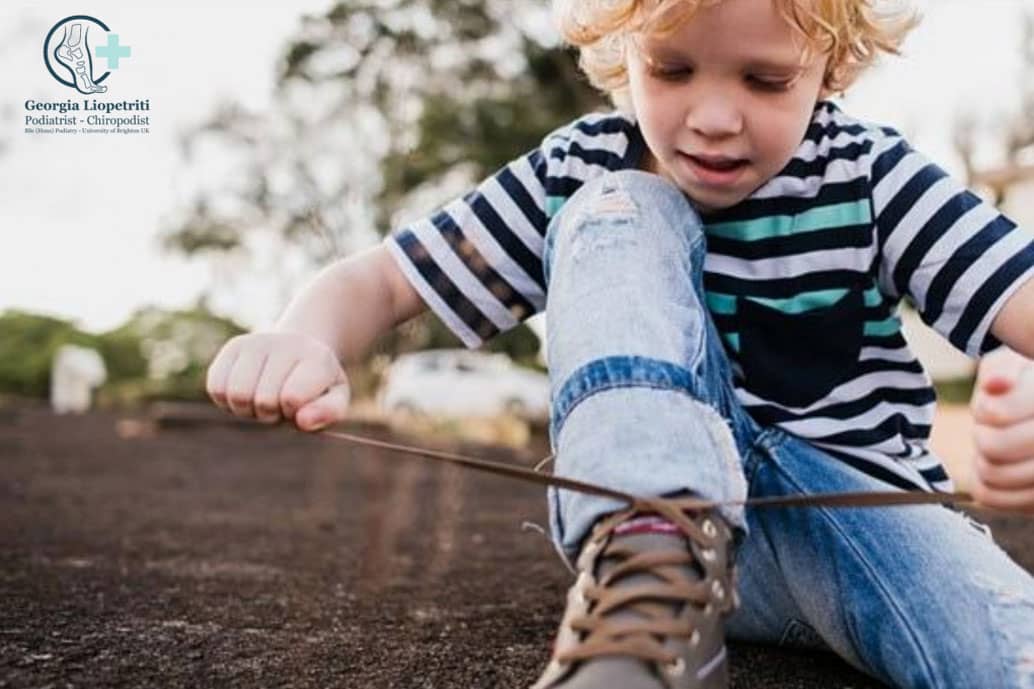In the back-to-school rush, shoe shops all over the country are heaving with parents and children intent on buying back-to-school shoes.
Yet many school children are wearing shoes that are too small, despite the risk of deformity and injury associated with ill-fitting shoes. Before parents splash out on expensive school shoes, The Society of Chiropodists and Podiatrists offers a checklist for choosing the right children’s shoes.
Checklist for choosing the right children’s shoes:
- Avoid slip on shoes. Choose shoes with laces, straps or Velcro fastenings, which act like a seatbelt in a car, holding the shoe onto the foot. Be wary of the current fashion for girl’s ballet style pumps which lack support to the inner border of the foot and provide no shock absorption.
- Ask if the assistant is a trained shoe fitter and, if not, if one is on the premises. Always have both feet measured for length and width. Shoes that are the wrong size can damage a growing foot.
- A newly fitted shoe should be approximately a finger’s width longer than the longest toe to allow for growth and elongation of the foot when walking.
- Trainers are foot friendly as long as feet are measured, however, many trainers are designed for particular sports and may not be suitable for everyday wear. Avoid the use of plimsolls in school all day, every day.
- Have your child’s feet measured in every shoe shop you visit – there are slight differences in sizing by different footwear manufacturers.
- Heel height should be no more than 4cm. Lower for younger children. The heel should have a broad base and be made from a shock-absorbing material.
- Natural material uppers such as leather are best. Check inside the shoe for seams or stitching that may cause irritation.
- The toe area of the shoe should be deep enough to allow the toes to move freely and not be squashed from the top or sides.
- The shoes should fit exactly around the heel without being tight or loose.
- The inner border of the shoe at the heel and arch area should be firm and support the foot.
Tips from the Society on looking after your children’s feet
- Inspect their shoes regularly for unusual wear and seek professional advice if you are concerned. Unusual wear may be the first indication that there is a problem with the foot, posture or general posture and should always be investigated by your registered podiatrist. Normally, wear is across the back of the heel or between the back and the outside. You should look out for severe wear on the inside or outside of the heel. This may carry forward to the sole of the shoe. Also the heel area of the upper may be broken and bulge inside or outside.
- Be aware that blisters and sores may develop with new shoes.
- Inspect children’s feet regularly for inflamed nails and red pressure marks in the top of the small joints of the toes, below the ankle bones and the back of the heel.
- Remember that teenagers in particular can be secretive about foot problems and a trivial, easily rectified problem can be more serious if neglected.
- If your children complain of itchy or painful sites or you see any rashes or hard raised areas on the skin seek professional advice immediately.
- Children have naturally sweaty feet but smelly feet may be an indication of poor hygiene.
- Due to being enclosed in a shoe and living close to potential sources of infection the foot is at relatively higher risk of infection compared to other parts of the body. Any blisters, cuts or abrasions should be treated with antiseptic and dressed immediately.
Source: The Society of Chiropodists and Podiatrists

